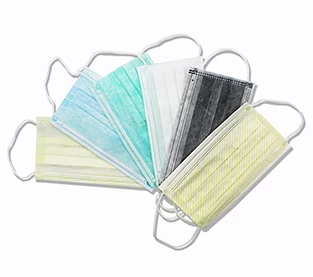Product: ES Material Fiber Nonwoven Fabric For Packaging
Raw Material: PP+PE
Nonwoven Technology: thermal bonded
Dotted Design: dot or plain
Gram: 25 gsm - 30 gsm
Color: White
Specification: custom
Sample: Can be provided without charge, freight to be collect
Applications:
Medical(20-60gsm): face masks,diapers,bed sheets,curtains,pillow covers,sanitary,etc
Packaging(25-30gsm): tea bag, coffee bag/filter paper, dust-proof covers.etc
Product: ES Thermal Bonded Non Woven Fabric For Tea Bag
Raw Material: PP+PE
Nonwoven Technology: thermal bonded
Dotted Design: dot or plain
Gram: 25 gsm - 30 gsm
Color: White
Specification: custom
Sample: Can be provided without charge, freight to be collect
Applications:
Medical(20-60gsm): face masks,diapers,bed sheets,curtains,pillow covers,sanitary,etc
Packaging(25-30gsm): tea bag, coffee bag/filter paper, dust-proof covers.etc
Product: Composite Non Woven Paper Desiccant Packaging Material
MOQ: 1000 kg
Material: Composite Non Woven Paper
Specification: Custom sizes.
Design: Welcome custom logo and design. Welcome OEM.
Color: Full Color of CMYK,Pantone Color as customer requirements
Weight: Based on size & material,thickness
Delivery Time: 10-15 days after confirmed the final artwork and order
Product: Desiccant Wrapping Paper
MOQ: 1000 kg
Material: DuPont Material
Specification: Custom sizes.
Design: Welcome custom logo and design. Welcome OEM.
Color: Full Color of CMYK,Pantone Color as customer requirements
Weight: Based on size & material,thickness
Delivery Time: 10-15 days after confirmed the final artwork and order
Product: Bi-component Non Woven Fabric Desiccant Packaging Material
MOQ: 1000 kg
Material: Bi-component Non Woven Fabric
Specification: Custom sizes.
Design: Welcome custom logo and design. Welcome OEM.
Color: Full Color of CMYK,Pantone Color as customer requirements
Weight: Based on size & material,thickness
Delivery Time: 10-15 days after confirmed the final artwork and order
Product: Spunbond Non Woven Fabric Custom Desiccant Packaging Material
MOQ: 1000 kg
Material: Spunbond Non Woven Fabric
Specification: Custom sizes.
Design: Welcome custom logo and design. Welcome OEM.
Color: Full Color of CMYK,Pantone Color as customer requirements
Weight: Based on size & material,thickness
Delivery Time: 10-15 days after confirmed the final artwork and order
As the best barrier layer for masks, meltblown cloth is an extremely fine material, and the inside is made up of many crisscross microfibers stacked in random directions. Take PP as an example. The higher the MFI, the finer the filaments drawn during meltblown processing and the better the filtration performance.
2. Hot air velocity(Non Woven Meltblown Fabric Wholesale)
Under the conditions of the same temperature, screw speed and receiving distance (DCD), the faster the hot air speed, the smaller the fiber diameter, the softer the hand of the non-woven fabric, and the more fiber entanglement, resulting in a denser and smoother fiber web. Strength increases.


3. Hot air jet angle(Medical Meltblown Filter Vendor)
The hot air jet angle (see Figure 5a) mainly affects the stretching effect and fiber shape. The smaller the angle will promote the formation of parallel fiber bundles, resulting in poor uniformity of the non-woven fabric. If the angle tends to 90°, a highly dispersed and turbulent airflow will be generated, which is beneficial to the random distribution of fibers on the condensed mesh curtain, and the final meltblown fabric has good anisotropic properties.
4. Receiving distance (DCD)(PP Melt Blown Non Woven Factory)
Too long a receiving distance will cause the longitudinal and transverse strength and bending strength to decrease, the non-woven fabric feels fluffy, and will cause the filtration efficiency and filtration resistance to decrease in the meltblown process.
5. Screw extrusion speed
In the case of constant temperature, the screw extrusion rate should be kept within a certain range:
Before a certain critical point, the faster the extrusion speed, the higher the quantitative and the greater the strength of the melt-blown cloth; when the critical value is exceeded, the strength of the melt-blown cloth decreases, especially when MFI>1000, which may be Because the extrusion rate is too high, the wire strands are not sufficiently drafted and the threads are severely combined, so that the bonding fibers on the cloth surface are reduced, and the strength of the melt blown cloth is reduced.